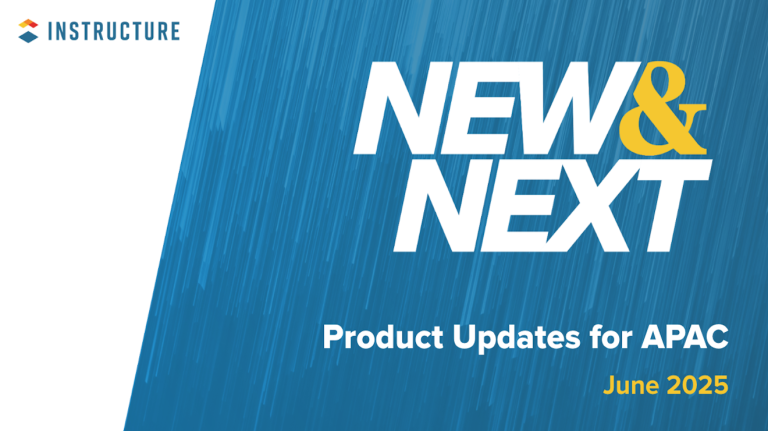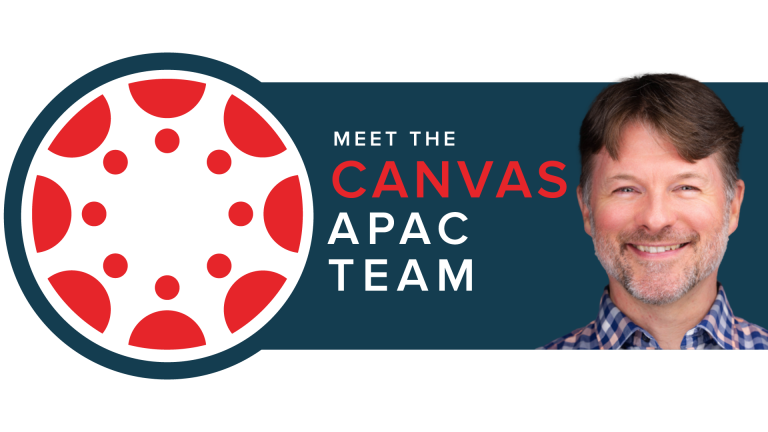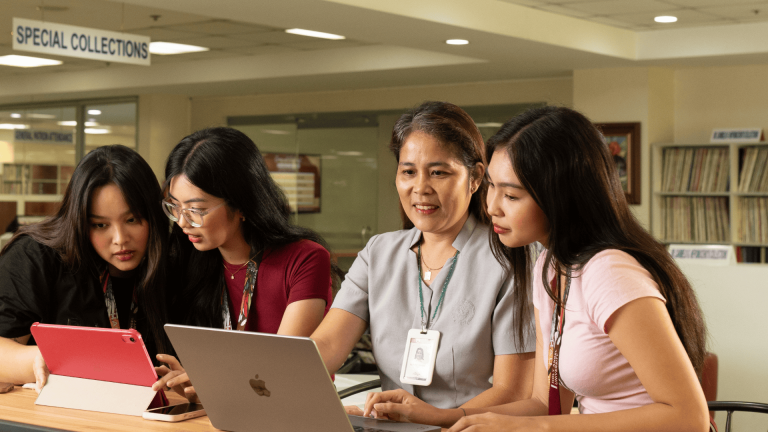
Anneka Weterman and Casey Beard of Aspire2 Distance Learning led a breakout session on Student Experience at CanvasCon Sydney 2019.
Aspire2 Distance Learning has been providing vocational education and training in New Zealand for 40 years, and implemented Canvas two years ago. Their previous LMS really served only as a “filing cabinet” and issues with usability hindered employment of the platform to engage with students to the extent desired. This organisation offers distance learning programs: this session focussed on steps taken to improve the experience of distance learners.
Distance learners resist profiling
The profile of distance learners doesn’t sit within convenient brackets – they’re diverse in terms of location, age, gender, ethnicity and are often already within the workforce. Many quite literally have no fixed time or place to conduct coursework – several have sent in pictures of where they typically study, which can be a kitchen counter, in front of the TV, or a flat surface shared with the family cats and a potted fern. Aspire2 Distance Learning aims to nurture the desire to learn and provide the same opportunities for success for all students, regardless of their circumstances. The option to study outside fixed times and locations is critical.
Using Canvas to engage with students
Canvas offered a mobile and intuitive learning platform that Aspire2 Distance Learning leveraged to build their engagement strategy. Techniques that work for their distance learners include:
-The implementation of Canvas was used as a catalyst for positive change across the organisation
-The ability to communicate via email, chat, and video and use apps was a huge step up from the “filing cabinet”. Tutors are more in control of their own content, using discussions, announcements and the inbox to communicate more often and in a more personalised way
-All student resources were lodged within a single course shell on Canvas, thereby providing an easily-located area for all pertinent forms, handbooks, guides, as well as a central platform for students to communicate with the institution, with individual tutors and with other students. Students are encouraged to visit and familiarise themselves with the Student Resources via quizzes and other learning initiatives that require answers from this repository
-Aspire2 Distance Learning took steps to avoid the risk of overwhelming students by delivering modules sequentially – students must complete one module before seeing the next step
“Whatever we do brings our students closer”
Staff monitor their students and the online learning environment – they know when students are online, and what they’re doing. They also require students to complete a number of learning activities, such as Learning Check-ins, that are formative tasks that do not count towards a final grade, but are designed to assess how individual students are dealing with the program. The first of these is delivered before the first formal assessment, and they’re conducted throughout the program and serve to identify struggling students who are then supported in an appropriate manner. Staff can and do interact with students at any stage of their studies.
The organisation engages a team of Student Success Enthusiasts to maintain contact with students and minimise isolation – deemed a huge risk within distance learning. Each student is contacted within a week of enrolment, and while the Student Success Enthusiasts are attuned to identify and assist any student with difficulties, they also serve to enthuse and congratulate succeeding students.
Extra-curricular activities also serve to bring staff and students closer together, and include fundraising for charity, team-building activities such as ukulele lessons, quiz nights and laughing yoga.
Takeaways:
-Distance and being distant are two very different things
-Try to take small, incremental steps towards your goals for optimal student experience, monitor progress
-Don’t be afraid of making mistakes; allow yourself to fail, learn, pick yourself up and try again
-Feel free to stand on the shoulders of others. Other educational institutions have student engagement programs that you can borrow/adapt/optimise to your own ends
-Optimising student experience is a process of continuous improvement – you may not get it right straight away, and what works now may not always work. Obtain feedback constantly and continually adjust
-Engage with other educational institutions – even those with different programs and student profiles will have some areas of commonality and useful ideas from which your organisation may benefit.
Related Content
 new_and_next_apac_june_2025.png
new_and_next_apac_june_2025.pngBlogs
 meet-canvas-apac-team-christopher.png
meet-canvas-apac-team-christopher.pngBlogs
 philippines_ched_cmo.png
philippines_ched_cmo.pngBlogs
